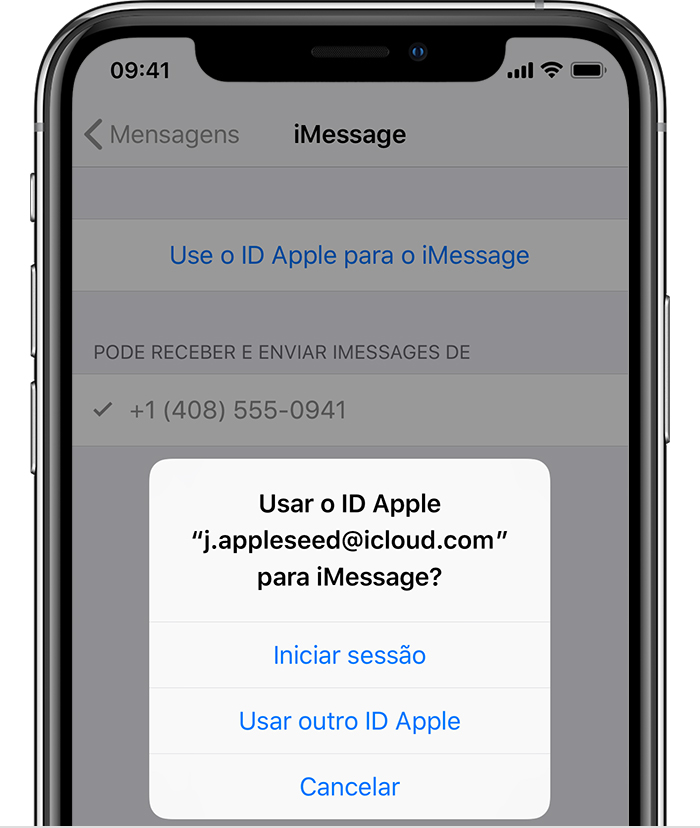Until now, most who are interested in macOS might have known everything or at least heard about the next version of macOS. The macOS Catalina is one of the most up running operating systems which has the most advanced features and update apps. This new version of the operating system which is recently out in July 2019 does everything in a quick, easy, and fairway.
In addition to Mac users who are enthusiastic about macOS, Windows users are also interested in macOS. Now without any use, there’s no benefit of their interest. With this in mind, they’ve found a working way to install macOS on Windows. The installation is process is shown by us and we’ve also shared the file.
How to set up find my iphone. Otherwise you’ll just track the iPhone you’re holding in your hand.I really hope this article helps you find your lost iPhone, iPad or Mac.
Your Mac already has the app you need to access iMessage and the following are the steps on how to actually send and receive messages. How to change default email app on mac shortcut. Click on Launchpad in your Dock. Search for and click on Messages. It will launch the built-in Messages app on your Mac. When the Messages app opens, you just need to confirm you want to use iMessage. A smarter way to keep iMessage running smoothly is to keep your Mac running in peak condition, and there’s no better app for this than CleanMyMac X. CleanMyMac X has a ton of features that aim to keep your Mac operating its best, but one of its more prominent services is ridding your system of.
With that, there are countless of Windows users running macOS on virtual machines such as VMware Workstation or VirtualBox. But after installation, pretty much most of the users have informed us of the features not working problem such as iMessage, iCloud, and App Store. In this article, I’ll show how to fix macOS Catalina iMessage, iCloud, and App Store problem on VMware on Windows PC.

Every time Apple announces a new operating system, Apple also reveals new awesome unique features with it such as Dark Mode. The Dark mode is one of the highlighted features in the new macOS Catalina. There are also a bunch of other features such as iCloud Drive folder sharing, Screen Time, Apple Music time-synced lyrics view, and more. You can also experience your favorite iPad apps now on your Mac. The update also improves the performance, quality, and security of your Mac.
Something else which you may notice is no more iTunes. That is the shifted with three different apps so now we have separate Apple Music, Apple TV, and Apple Podcasts. And use Finder for some of the other functions, for example, syncing iPhone. Around that, Apple has also updated its existing features such as iMessage, iCloud, App Store and more.
System Definitions
- iMac 13,2
board-id = “Mac-FC02E91DDD3FA6A4”
hw.model.reflectHost = “FALSE”
hw.model = “iMac13,2”
serialNumber.reflectHost = “FALSE”
serialNumber = “C02H82KLDNCW”
smbios.reflectHost = “FALSE”
efi.nvram.var.ROM.reflectHost = “FALSE”
efi.nvram.var.MLB.reflectHost = “FALSE”
efi.nvram.var.ROM = “3c0754a2f9be” - iMac 14,2
board-id = “Mac-27ADBB7B4CEE8E61”
hw.model.reflectHost = “FALSE”
hw.model = “iMac14,2”
serialNumber.reflectHost = “FALSE”
serialNumber = “C02KP7A9F8JC”
smbios.reflectHost = “FALSE”
efi.nvram.var.ROM.reflectHost = “FALSE”
efi.nvram.var.MLB.reflectHost = “FALSE”
efi.nvram.var.ROM = “3c0754a2f9be” - iMac 18,3
board-id = “Mac-BE088AF8C5EB4FA2”
hw.model.reflectHost = “FALSE”
hw.model = “iMac18,3”
serialNumber.reflectHost = “FALSE”
serialNumber = “C02TC4YKJ1GJ”
smbios.reflectHost = “FALSE”
efi.nvram.var.ROM.reflectHost = “FALSE”
efi.nvram.var.MLB.reflectHost = “FALSE”
efi.nvram.var.ROM = “3c0754a2f9be” - MacBook Pro 14,3
board-id = “Mac-551B86E5744E2388”
hw.model.reflectHost = “FALSE”
hw.model = “MacBookPro14,3”
serialNumber.reflectHost = “FALSE”
serialNumber = “C02TX2EZHTD5”
smbios.reflectHost = “FALSE”
efi.nvram.var.ROM.reflectHost = “FALSE”
efi.nvram.var.MLB.reflectHost = “FALSE”
efi.nvram.var.ROM = “3c0754a2f9be”
Once added the system definition to the macOS Catalina vmx then press Ctrl + S to save the file.
After restart, the problem will be no more longer there so enjoy. But if this method doesn’t work or you couldn’t accomplish with this method or want another method so take a look at another step below.
Next Fix: Fix macOS Catalina iMessage, iCloud, App Store on VMware & VirtualBox
How To Remove Imessage App On Macbook
This solution is if the first fix didn’t work so proceed with this. Remember not to skip the first method and directly head to this step. This is only if the first step didn’t work.
To fix, download the latest version of Clover Configurator. Once installed, open it and click on SMBIOS on the left and then click on the top and bottom of the arrow shown in the image below. After selecting the macOS version (iMac 18,3, MacBook Pro 14,2) and then click “Generate New”. It will produce a new series to define the system you have chosen.
Generate New Serial Number for MacOS Best password app iphone mac.
By creating a new serial number, replace it with the old serial number in the macOS Catalina.vmx file. Be sure not to change somewhere else and only make this change. Other changes make break machine.
Fix Apps Not Opening on macOS Catalina
If you received an error message while opening Clover Configurator or any other program, click Ok to close the error window.
Clover-Configurator Not Open

Open Preferences> Security & Privacy.
Platform: Linux. Languages: C, C, PHP, All languages that support ODBC or JDBC. Free database macos app. SQLite's code is in the public domain, which makes it free for commercial or private use. EagleData is a simple but flexible database. It is useful to file your addresses, catalogue your cds, games, or video-collection, etc. You can even export your data as an html-table and print labels. License: Freeware Developer/Publisher: EagleSoft Modification Date: March 3, 2019 Requirements: Mac OS X. I feel your pain. I've not found a single app equivalent to MS Access for the Mac. There are some decent online services like Zoho Creator (free) and TrackVia (not free) but if you MUST have something very close to Access or FileMaker installed on your Mac natively, I can offer the following suggestion. On the Mac, you can install and run MySQL.
Uninstall apps on Mac with App Cleaner & Uninstaller. The first way of uninstalling apps is to use a. How to remove click&clean app mac. How to Delete Apps in the Finder on Mac Manually (the Hard Way) Unlike Windows computers, Mac.
Click the Allow or Open button anyway and open the app.
That was the method I did to fix iMessage and iCloud and App Store on VMware. I recommend using the first method first. If it didn’t work, try for the next one. In the final fix, I’ve shown and fixed the problem of not opening apps which requires some permission. I’ve also done allowing third-party apps in a separate tutorial.
Imessage App Not Opening On Mac
That should do the thing. If it didn’t, put out the error in the comments form.